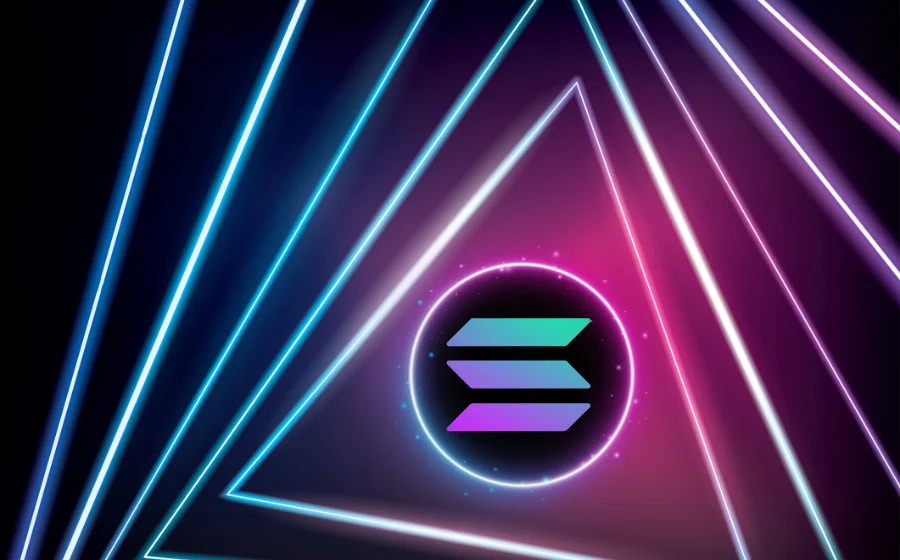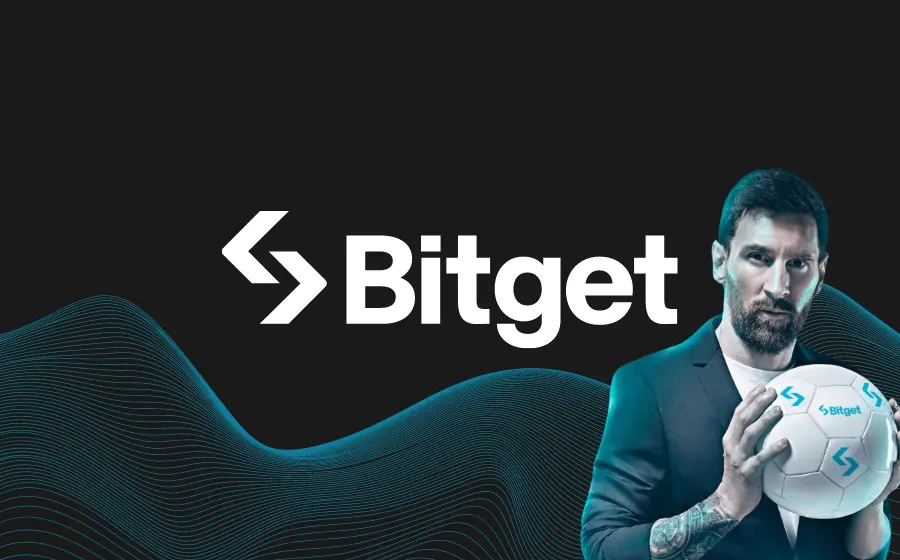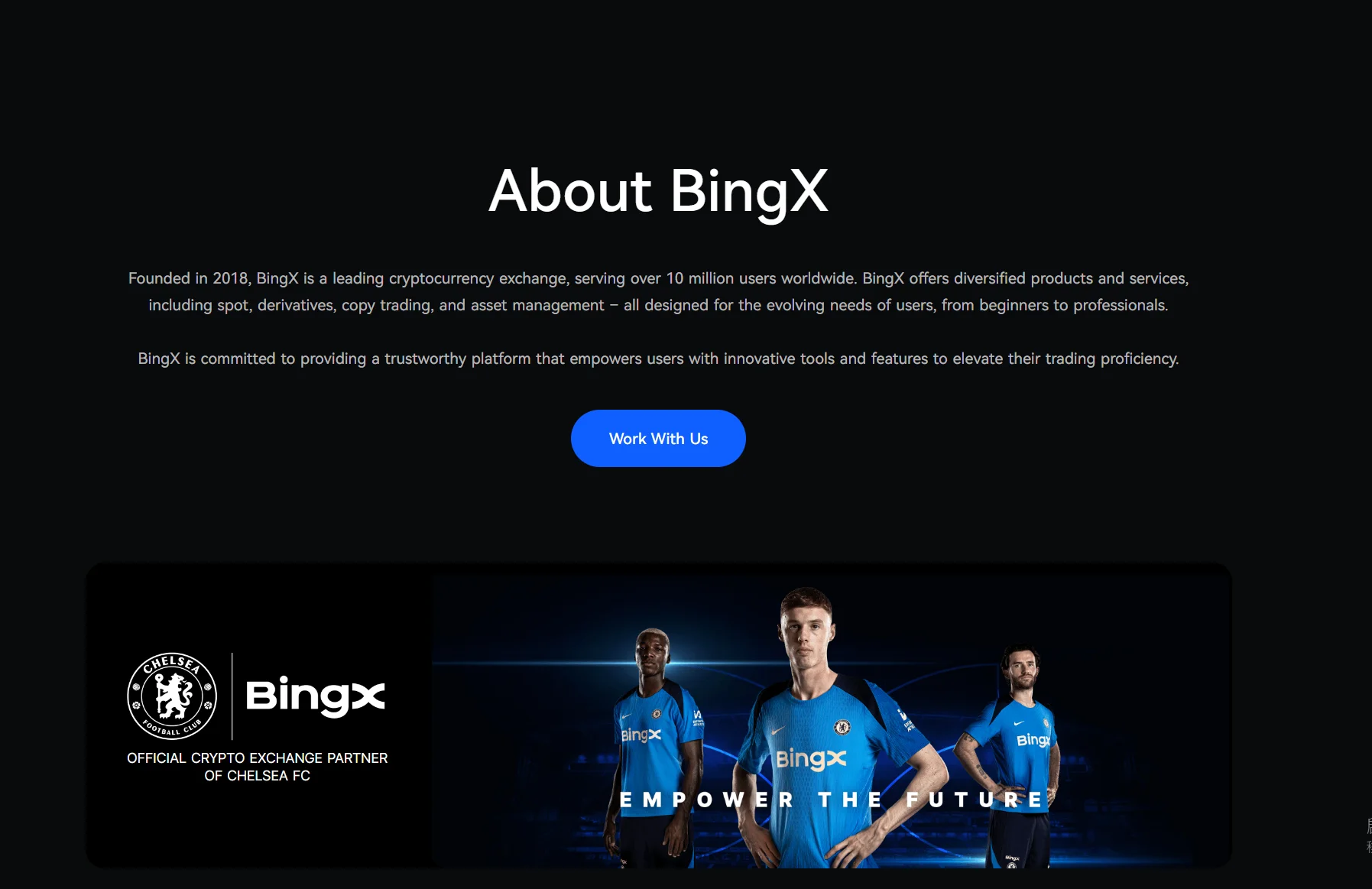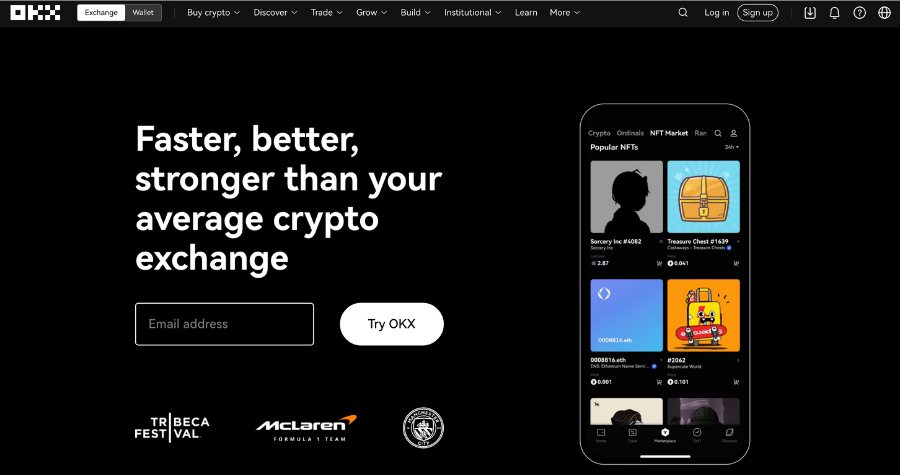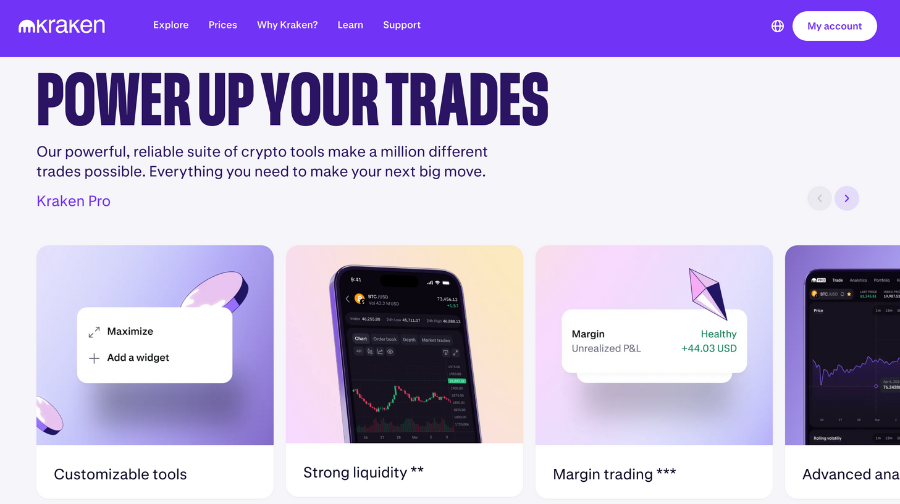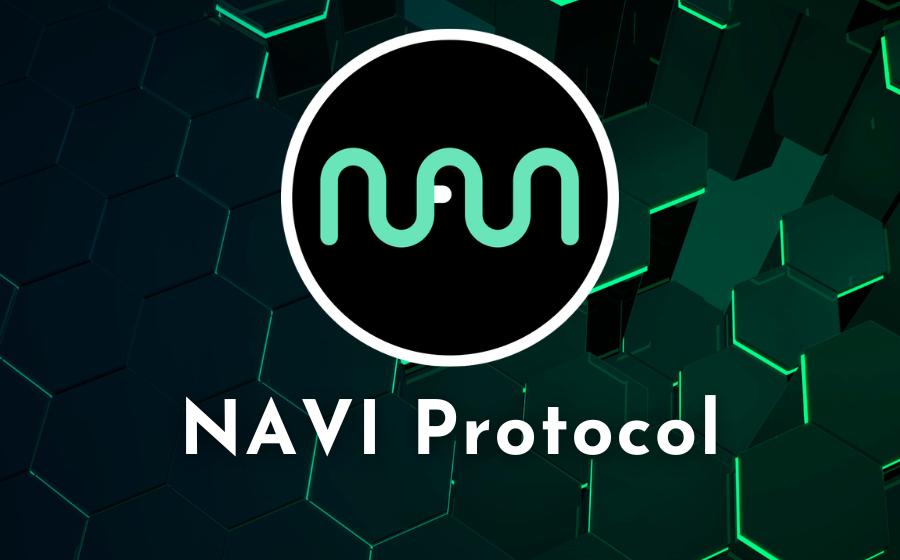
KEYTAKEAWAYS
- Margin trading in crypto allows investors to borrow funds to increase their position size, amplifying potential profits and losses, with leverage ratios varying across platforms.
- Understanding concepts like cross vs. isolated margin, long vs. short positions, and managing risks through stop-loss orders and regular profit-taking is crucial for successful margin trading.
- Top platforms for margin trading crypto in 2024 include Bitget, Binance, BingX, OKX, and Kraken, each offering unique features such as competitive fees, high leverage options, and various trading pairs.

CONTENT
Curious about margin trading crypto? This guide breaks down the basics, risks, and top platforms for 2024, helping you amplify your trading potential responsibly.
WHAT IS MARGIN TRADING IN CRYPTO?
When margin trading crypto, you can borrow money from a broker to buy more cryptocurrency than you have on hand. But to use this leverage, you’ll need to put up a part of the trade’s value, called the margin, as collateral.
Here’s a basic example. Suppose you have $100 in your crypto account and let’s say you want to invest in $200 worth of Bitcoin. In margin trading, you can borrow the extra $100 from a lender to make the full $200 investment.
Now, if Bitcoin’s value increases by 50%, your $200 investment would now be worth $300. You can sell the Bitcoin, repay the borrowed $100, and you’re left with $200. Without margin trading, your $100 would have only grown to $150.
However, let’s say Bitcoin’s value drops by 50% instead. Your lender would use your $100 collateral to cover the losses and you’ll probably be left with nothing. Without margin trading, you would have only lost $50.
So, always remember the key principle of margin trading crypto (or stocks): the more you borrow, the more you stand to gain or lose.
>>> More to read : Crypto Trading Strategies for Beginners
HOW DOES IT WORK?
We’ve mentioned the general idea of how margin trading crypto works, but there’s still more to it.
Leverage Ratios
Margin trading uses leverage to boost your trading power. An example would be:
You put in some money as collateral (your margin). Then you pick a leverage ratio, like 2:1 or 5:1.
Suppose you start with $100 margin:
- 2x leverage: Trade $200 (your $100 + $100 borrowed)
- 5x leverage: Trade $500 (your $100 + $400 borrowed)
Different crypto exchanges vary in their leverage options. Higher leverage means bigger potential profits, but also bigger risks.
Long Position vs Short Position
- Going long means you’re betting that the price of a crypto will increase. When you go long, you borrow money to buy more of the cryptocurrency than you could with just your own funds. If the price rises, you sell at the higher price, repay the loan, and keep the profit.
- Going short means you’re betting that the price of a crypto will drop.
Example of going short on Bitcoin (5x leverage):
- Your margin: $100
- Borrowed from exchange: $400
- Total position: $500 (5x leverage)
- Bitcoin price: $50,000
- Position size: 0.01 BTC ($500 / $50,000)
Steps
- Open short position for 0.01 BTC at $50,000
- Bitcoin price drops to $45,000
- Close position by buying 0.01 BTC at $45,000
- Profit: $50 ($500 – $450)
- Repay $400 loan
- Your gain: $50 (minus fees and interest)
>>> More to read : 10 Best Technical Indicators for Crypto Trading in 2024
Margin Call, Margin Levels and Liquidation
If you decide to try out margin trading crypto, here are some important terms you need to know.
| Term | Definition |
|---|---|
| Initial margin | The collateral you put up to open a position. |
| Margin level | The funds the exchange requires you to maintain. |
| Maintenance margin | Extra collateral needed to keep your position open. |
| Margin call | A warning that your margin level is low and you need to add funds. |
| Liquidation | Forced closing of your position if you can’t meet the margin call. |
Cross Margin vs Isolated Margin
- Cross Margin: Uses shared funds for all positions. Can offset losses with gains from other trades, potentially reducing liquidation risk. Better for managing overall portfolio, but all positions share the same risk.
- Isolated Margin: Assigns separate funds to each position. Liquidation of one trade doesn’t affect others, giving more control over individual positions. Allows for different leverage on each trade, but may lead to quicker liquidations.
>>> More to read : How to Read Crypto Charts: A Beginner’s Guide to Market Analysis
9 TIPS FOR GETTING THE BEST RESULTS
We’ve already emphasized that margin trading crypto has its risks. To help investors considering this strategy, here are some practical tips to manage risk effectively:
-
First tip for margin trading crypto is to understand leverage.
Margin trading allows you to borrow funds to increase your position size. This can amplify both profits and losses.
-
Second tip for margin trading crypto is to be alert to margin calls.
Exchanges will warn you when your position nears liquidation. Add funds promptly to avoid forced closure of your position.
-
Third tip for margin trading crypto is to manage your collateral wisely.
Know the exchange’s rules about the funds you deposit as collateral and the leverage ratios available to you.
-
Fourth tip for margin trading crypto is to use stop-loss orders.
Set automatic stop-losses to limit potential losses, especially when you can’t monitor the market constantly.
-
Fifth tip for margin trading crypto is to start small.
Despite the temptation of high leverage, begin with small trades. Increase your position sizes gradually as you better understand the risks.
-
Sixth tip for margin trading crypto is to take profits regularly.
Lock in some gains when the market is favorable, as conditions can change quickly in crypto markets.
-
Seventh tip for margin trading crypto is to choose a reliable exchange.
Use regulated, reputable platforms for margin trading to ensure fund safety and good customer service.
-
Eighth tip for margin trading crypto is to use a separate trading account.
Have a dedicated margin trading account to avoid accidentally using long-term hold assets as collateral.
-
Ninth tip for margin trading crypto is to understand the risks.
Losses in margin trading can exceed your initial investment. Before opening a position, carefully calculate potential losses to ensure they’re within your risk tolerance.
THE ADVANTAGES AND DISADVANTAGES OF MARGIN TRADING CRYPTO
| Advantages | Disadvantages |
|---|---|
|
Increased Profit Potential
By using leverage, traders can amplify their gains from small market movements. |
Higher Risk of Loss
Just as leverage can amplify gains, it can also magnify losses, potentially leading to losses that exceed the initial investment. |
|
Short-Selling Opportunities
Margin trading allows traders to short-sell, meaning they can profit from a decline in cryptocurrency prices. |
Market Volatility
Cryptocurrencies are highly volatile, and rapid price movements can trigger margin calls and forced liquidations. |
|
Flexible Strategies
Leverage can be used to implement more advanced trading strategies that may not be possible with just the trader’s capital. |
Complexity
Margin trading crypto requires a deep understanding of market dynamics and risk management, making it unsuitable for inexperienced traders. |
5 BEST PLATFORMS FOR MARGIN TRADING CRYPTO
#1 Best Platform for Margin Trading Crypto | Bitget
Bitget offers a range of trading options, including spot, futures, and margin trading. When it comes to margin trading, Bitget provides traders with the opportunity to amplify their potential profits by borrowing funds to increase their trading position.
The platform offers competitive fees for margin trading, with maker fees ranging from 0.0072% to 0.02% and taker fees from 0.028% to 0.06% for futures trading. Bitget supports an impressive 939 trading pairs, giving users a wide variety of options for margin trading across multiple cryptocurrencies.
The exchange offers leverage ratios up to 125X for certain pairs, allowing experienced traders to significantly boost their trading power.
ꚰ Register now through CoinRank’s referral link and trade to get $20!
Key features:
- Margin trading available for futures
- 939 trading pairs supported
- Competitive fees (maker: 0.0072%-0.02%, taker: 0.028%-0.06%)
- Leverage up to 125X for some pairs
- 20% fee discount for BGB token holders
>>> Bitget related articles:
- Copy Trading Crypto Like a Pro on Bitget | Bitget Review 2024
- Bitget Futures Trading: A Comprehensive Beginner’s Guide
- Bitget Copy Trading Explained: How It Works and Why You Might Need It
#2 Best Platform for Margin Trading Crypto | Binance
With 1249 trading pairs available, Binance provides extensive choices for margin trading crypto. For spot trading, the exchange offers both isolated and cross-margin options, with leverage up to 10x for isolated margin and 3x for cross-margin trading.
Binance futures trading allows for leverage up to 125x on select pairs. The platform’s fee structure is competitive, charging 0.012% for maker fees and 0.030% for taker fees on spot margin trades.
Binance uses a customizable interest rate scheme starting as low as 1%, calculated on a 24-hour basis.
Key features:
- Margin trading available for spot and futures
- 1249 trading pairs supported
- Competitive spot margin fees (maker: 0.012%, taker: 0.030%)
- Spot leverage: up to 10x (isolated), 3x (cross)
- Futures leverage: up to 125x on select pairs
- Interest rates as low as 1%
>>> Read more: WebX 2024: Richard Teng, Binance CEO, on Crypto’s Future
#3 Best Platform for Margin Trading Crypto | BingX
BingX, a three-time consecutive winner of TradingView’s “Best Exchange Broker” award, is a notable crypto exchange that places a strong emphasis on margin trading. With 929 trading pairs available, BingX offers substantial leverage options across various trading instruments.
For futures trading, the platform provides up to 150x leverage for Bitcoin, 100x for Ethereum, and lower ratios for other altcoins. BingX’s fee structure for both makers and takers varies across different tiers, with potential reductions for higher VIP levels.
Key features:
- Margin trading available for futures
- 929 trading pairs supported
- Competitive fees (maker: 0.02%, taker: 0.05%)
- Futures leverage: up to 150x for Bitcoin, 100x for Ethereum
- Interest rates: 5-12% yearly
>>> Read more: BingX Review 2024 | Best Copy Trading Crypto Platform
#4 Best Platform for Margin Trading Crypto | OKX
OKX is known for its low fees and global reach across over 100 countries. With 556 trading pairs available, OKX offers a comprehensive margin trading crypto experience for its large user base.
The platform supports over 350 tradable cryptocurrencies for margin trading, including popular coins and lesser-known tokens. OKX provides up to 10x leverage for spot trading and up to 100x leverage for futures contracts.
The fee structure is competitive, with spot market fees ranging from 0.05% to 0.07%, and futures trading fees at approximately 0.045% for market orders.
Key features:
- Margin trading available for spot and futures
- 556 trading pairs supported
- Competitive fees (spot: 0.05%-0.07%, futures: ~0.045%)
- Leverage: up to 10x for spot, up to 100x for futures
- Interest rates: 1-3% annually
#5 Best Platform for Margin Trading Crypto | Kraken
As one of the oldest cryptocurrency exchanges and with 746 trading pairs available, Kraken offers a robust margin trading experience. The platform introduced margin trading and dark pools in 2015, allowing users to place large orders for price advantages.
Kraken provides up to 3x leverage for spot trading and up to 50x leverage for futures trades. The fee structure is competitive, with spot margin trading fees ranging between 0.01% and 0.02% based on the trading pair, plus a rollover fee charged every four hours to maintain open positions.
Key features:
- Margin trading available for spot and futures
- 746 trading pairs supported
- Competitive fees (spot: -0.02%, futures: ~0.05%)
- Leverage: up to 3x for spot, up to 50x for futures
- Interest rates: 0.01-0.02% every 4 hours
FAQS
- What is the difference between spot trading and leverage trading?
Spot trading uses only your funds. Leverage trading borrows money to increase your position size, amplifying potential gains and losses.
- Is margin better than leverage?
Margin and leverage are related concepts. Margin is the collateral you provide to access leverage for potentially higher returns.
- What is an example of margin trading crypto?
Borrowing $100 to invest $200 in Bitcoin. If Bitcoin’s value increases 50%, your $100 investment could grow to $200.
- What is a margin call in crypto trading?
A warning from the exchange when your position nears liquidation, prompting you to add funds to avoid forced closure.
- What’s the difference between cross margin and isolated margin?
Cross margin uses shared funds for all positions. Isolated margin assigns separate funds to each position, limiting risk exposure.
- What’s a key tip for successful margin trading in crypto?
Start small, use stop-loss orders, and understand the risks. Losses can exceed your initial investment, so calculate potential losses carefully.
>>> More about margin trading: What is Margin Trading: A Comprehensive Introduction
▶ Buy Crypto at Bitget
CoinRank x Bitget – Sign up & Trade to get $20!
Looking for the latest scoop and cool insights from CoinRank? Hit up our Twitter and stay in the loop with all our fresh stories!




